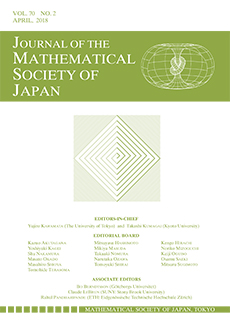Abstract
In 1879, Thomae discussed the relations between two generic hypergeometric -series with argument 1. It is well-known since then that, in combination with the trivial ones which come from permutations of the parameters of the hypergeometric series, Thomae had found a set of 120 relations. More recently, Rhin and Viola asked the following question (in a different, but equivalent language of integrals): If there exists a linear dependence relation over between two convergent -series with argument 1, with integral parameters, and whose values are irrational numbers, is this relation a specialisation of one of the 120 Thomae relations? A few years later, Sato answered this question in the negative, by giving six examples of relations which cannot be explained by Thomae's relations. We show that Sato's counter-examples can be naturally embedded into two families of infinitely many -relations, both parametrised by three independent parameters. Moreover, we find two more infinite families of the same nature. The families, which do not seem to have been recorded before, come from certain -transformation formulae and contiguous relations. We also explain in detail the relationship between the integrals of Rhin and Viola and -series.
Citation
Christian KRATTENTHALER. Tanguy RIVOAL. "How can we escape Thomae's relations?." J. Math. Soc. Japan 58 (1) 183 - 210, JANUARY, 2006. https://doi.org/10.2969/jmsj/1145287098
Information





